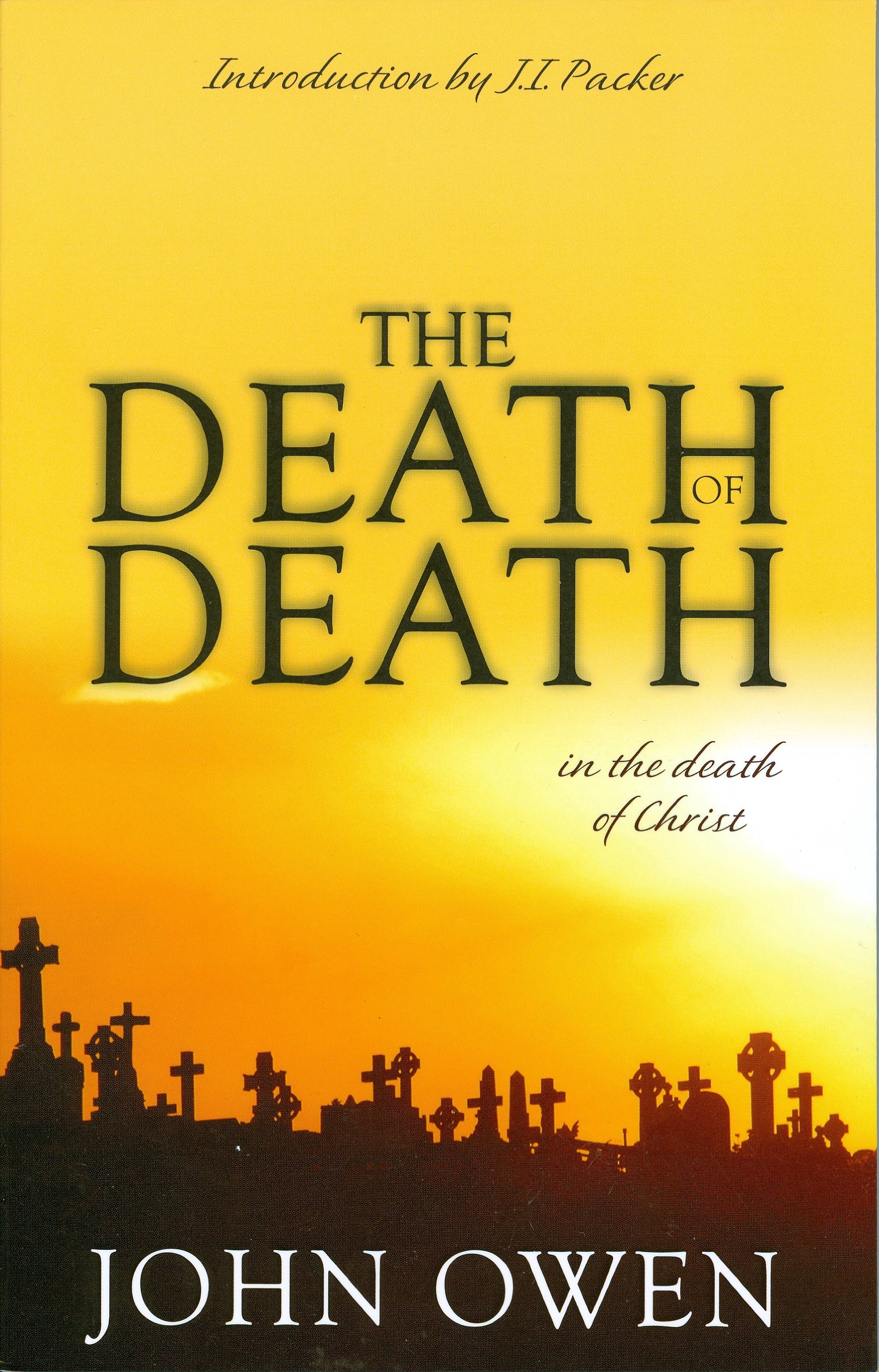A Brief Study Guide from Books At a Glance
About the Author
Known as the “theologian’s theologian,” John Owen (1616–1683) was vice chancellor of Oxford University and served as advisor and chaplain to Oliver Cromwell. Among the most learned and active of the Puritans in seventeenth-century Europe, he was an erudite and accomplished theologian both in doctrine and practical theology.
Overview
The Death of Death in the Death of Christ is Owen’s landmark treatment defense of particular redemption. It’s a historic work that all sides of the discussion must consider. We provide below J.I. Packer’s outline-analysis of the book, followed by chapter-by-chapter study questions.
Outline-Analysis by J.I. Packer
Books I.–II. contain a survey of the biblical account of redemption through the death of Christ, arranged with a view to determining its intended and accomplished end. I.i, ii., are introductory; I.iii–II.v. form a single exposition and defense of biblical teaching on this subject.
- Introduction to the treatise (I.i.):
Scripture describes the end intended and accomplished by the Father and the Son through the Son’s death as the full salvation (actual reconciliation, justification, sanctification, adoption and glorification) of the Church.
The view that Christ’s death was a “general ransom” for all implies either that the Father and the Son have failed in their saving purpose, or that all will be saved, or that the purpose of Christ’s death was not to save any particular person absolutely.
Since this third alternative, which the advocates of a “general ransom” embrace, is dishonouring to Christ and harmful to faith, Owen will oppose it.
- Preliminary definitions: “end” and “means” analyzed and related (I.ii.).
- The biblical doctrine of redemption stated and defended (I.iii.–II.v.).
(i) The agent of it: the Triune God (I.iii.–v.).
The Father
(1) sent His Son into the world, by (a) appointing Him to His Mediatorial work; (b) giving Him all gifts and graces needed for His work; (c) entering into covenant with Him about His work;
(2) laid on Him the punishment of sin. (I.iii).
The Son
(1) too flesh;
(2) offered Himself;
(3) intercedes. (I.iv).
The Spirit concurred with Christ in His incarnation, oblation and intercession. (I.v).
(ii) The means of it: the oblation and intercession of Christ (I.vi.–viii.).
Note
(a) both acts have the same end (bringing many sons to glory);
(b) both acts respect the same persons;
(c) the second rests on the first, securing the communication to these persons of what the first procured for them. (I.vi).
—Proof of this assertion:
1. From the uniform conjunction of these two acts in Scripture.
2. From their both being acts of the same priestly office.
3. From the nature of Christ’s intercession.
4. From the identity of what the oblation procured and the intercession bestows.
5. From Christ’s own conjunction of the two acts in John 17.
6. From the result of denying this conjunction—the destruction of all assurance drawn from the fact of Christ’s death for one. (I.vii).
—Answer to More’s arguments against this conjunction:
a. As to Christ being a double Mediator, both general and special, alleged from 1 Tim. 2:5; 4:10; Heb. 9:15.
b. As to Christ interceding for unbelieving sinners as well as believing saints, alleged from Isa. 53:12; Luke 23:34; John 17:21-23; Matt. 5:1416; John 1:9.
c. As to Christ being a priest for all in respect of one end, and for some only in respect of all ends, alleged from Heb. 2:9; 9:14, 15, 26; John 1:29; 1 John 2:2; Matt. 26:28. (I.viii).
(iii) The end of it: the glory of God, through the saving of the elect (II.i.–v.).
- Statement of the true view:
the ultimate, supreme end of Christ’s death was to bring glory to God; the immediate, subordinate end of it was to bring us to God (which includes the bestowing of both grace and glory, faith and salvation ). (II.1).
- Rejection of alternative views:
the end of Christ’s death was not (a) His own good (His exaltation), nor (b) His Father’s good (the securing for God of a desire liberty to pardon human sin); for. . .
The remainder of this article is premium content. Become a member to continue reading.
Already have an account? Sign In
